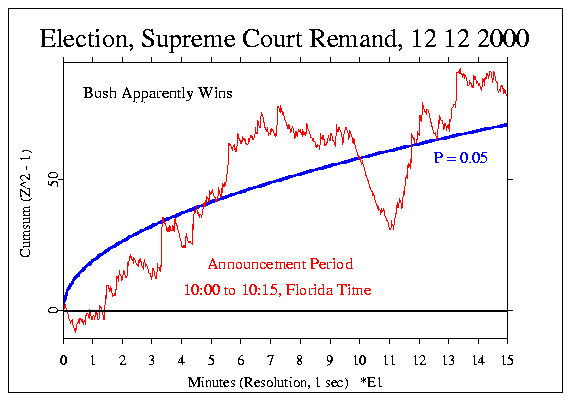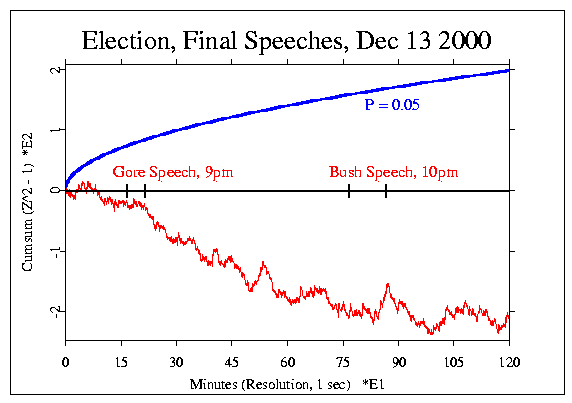The Final Decision
On December 12th at about 10:00 pm, Florida time (EST), the US Supreme Court
announced its decision to remand the last challenge case back to the
Florida courts. Within a few minutes, the interpretations on the
news programs began to make clear that Gore's
chances were over, and Bush would be the winner. The data
from the 30 reporting eggs
were downloaded at exactly 10:15, for the purpose of the GCP
analysis. The Chisquare for the 15 minute period is 981.06, on 900
degrees of freedom, with a corresponding p-value of 0.03062.
The following figure shows this 15 minute period. It shows a strong
deviation, which is unusual for political events. Perhaps it
symbolizes the sigh of relief (which may have a flavor of
resignation) that is surely a widely shared emotion. The formal
prediction was again agreed to by Paul Bethke and Roger Nelson.

Paul is developing an independent analytical approach which he has
used for an exploration of the three hours
of data surrounding this critical event.
He says,"The data are from UTC 13-DEC-2000 02:00-05:00, the period around the
publishing of the US Supreme Court decision which stopped the recounts
in Florida. I believe the release was at or near 03:00. The peaks center
around 03:50 - perhaps when it became clear what the ruling meant."
On the next day, Gore made his concession speech at 9:00 pm, EST,
followed by Bush giving his acceptance speech at 10:00 pm. Though we
made no formal prediction, expecting it to be somewhat anti-climactic,
we thought that this final event in the
long post-election saga deserved an exploratory look. Gore's
talk was about about 5 minutes long, and the corresponding data
showed no clear trend. Bush spoke for about 10 minutes,
and there was a small positive trend that yielded
a Chisquare of 634.61 on 600 df, with a p-value of 0.159.
